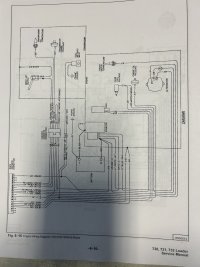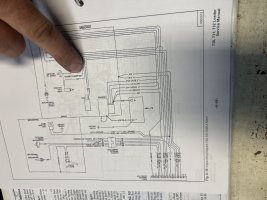Good morning from Wisconsin. I too have a 742 that was very temperamental when it was cold out. I too had experienced the same situations in the past. If it was extremely cold outside I'd have to fully choke it and sound like the same symptoms. I even have an engine block heater. Mine has the Mitsubishi engine and it just doesn't really like the cold. I replaced the points, coil, plugs, etc., and it made it better. With the cold hydraulic oil that too didn't help. My cure after everything was to plug in the block heater a good 4 hours before even trying to start it. The other cure when I thought I may have to use it or snow was coming was to move my p/u truck out of the heated garage and move the bobcat in the night before to allow everything to warm up. I found this was also easier on the hydraulics because the oil would be warm too.
I do agree with the other comments that it could be a mouse that chewed through a wire or a bad ignition switch. Jumping it as mentioned, and a volt ohm meter would help chase those circuits down and testing the ignition switch. I've always been looking for MEL 1138A remote switch which plugs into the harness in the engine compartment but I haven't found one yet.
Good luck with it as I love my 742B as its easy to work on.


